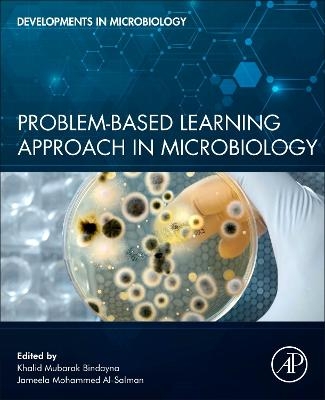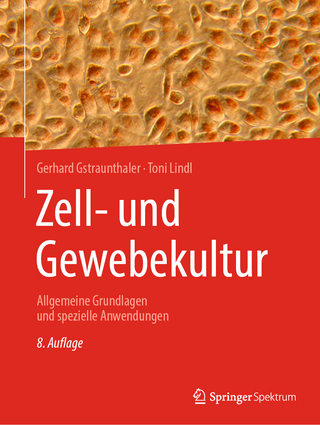
Problem-Based Learning Approach in Microbiology
Academic Press Inc (Verlag)
978-0-323-95092-3 (ISBN)
In seven sections, each problem in each section begins with a clinical case scenario and is followed by the learning objectives of the case. The “Question-and-answer section facilitates student-tutor interaction, thereby resulting in a problem-solving approach. The etiological agent is then described in complete detail comprising the epidemiology and pathogenicity of the agent, and the host immune response, clinical manifestations, diagnostic, and therapeutic measures. This book includes a wide-spectrum of commonly encountered infectious diseases, emerging infectious diseases, and immunological diseases. This book caters to the need for fundamental knowledge through an alternative approach achieved by dividing the book into sections.
This book facilitates a more effective learning process thereby ensuring better information retention, correlation with real-life scenarios, and better applicability of the concepts.
Khalid Mubarak Bindayna, PhD, is a professor of microbiology with 30 years of experience in teaching in PBL and received a Ph.D. in microbiology from the Imperial College of Medicine in London. Bindayna has published over 30 articles in peer-reviewed medical journals, including The Lancet. Jameela Al-Salman, PhD, is an associated professor of infectious diseases with 20 years of experience in teaching in PBL. Salman has earned an MD in medicine, is an American board–certified infectious diseases specialist, and is a consultant of infectious diseases. She has published over 30 articles in peer-reviewed medical journals.
ACKNOWLEDGMENT HOW TO USE THIS BOOK
CHAPTER 1 Basic concepts in microbiology and immunology
Problem number 1.1: antibiotics Diagnosis Treatment Follow-up and outcome Question and answer Learning objectives Discussion Key take-aways
Problem number 1.2: sterilization Question and answer Learning objectives Discussion Key take-aways
Problem number 1.3: fever Diagnosis Treatment and support Follow-up and outcome Question and answer Learning objectives Discussion Key take-aways
Problem number 1.4: food poisoning caused by Shigella flexneri Diagnosis Treatment Follow-up and outcome Question and answer Learning objectives Discussion Etiological agent Key take-aways
Problem number 1.5: immunodeficiency Diagnosis Treatment and therapy Follow-up and outcome Question and answer Learning objectives Discussion Key take-aways References
CHAPTER 2 Infections of the central and sensory nervous system
Problem number 2.1: Tetanus caused by Clostridium tetani infection Diagnosis Treatment Question and answer Learning objectives Discussion Etiological agent Key take-aways
Problem number 2.2: Shingles caused by herpes zoster virus infection Diagnosis Treatment Question and answer Learning objectives Discussion Etiological agent Key take-aways
Problem number 2.3: Preseptal cellulitis caused by Hemophilus influenzae infection Diagnosis Treatment Question and answer Learning objectives Discussion Etiological agent Key take-aways
Problem number 2.4: Subdural empyema caused by Streptococcus pyogenes infection Diagnosis Treatment Question and answer Learning objectives Discussion Etiological agent Key take-aways References
CHAPTER 3 Infections of the gastrointestinal and hepatobiliary system
Problem number 3.1: Klebsiella pneumoniae liver abscess caused due to Klebsiella pneumoniae infection Diagnosis Treatment Question and answer Learning objectives Discussion Discussion Etiological agent Key take-aways
Problem number 3.2: Liver failure caused by cytomegalovirus-induced hepatitis Diagnosis Treatment Question and answer Learning objectives Discussion Etiological agent Key take-away
Problem number 3.3: Ulcerative colitis caused by rotavirus infection Diagnosis Treatment Follow-up and outcome Question and answer Learning objectives Discussion Etiological agent Key take-aways
Problem number 3.4: Gastric ulcer caused by Helicobacter pylori Diagnosis Treatment Follow-up and outcome Question and answer Learning objectives Discussion Etiological agent Key take-aways References
CHAPTER 4 Infections of the respiratory system
Problem number 4.1: Community-acquired pneumonia caused by Streptococcus pneumoniae Current (on-going) medications Diagnosis Treatment Question and answer Learning objectives Discussion Etiological agent Key take-aways
Problem number 4.2: Cystic fibrosis exacerbated by Pseudomonas aeruginosa infection Diagnosis Treatment Question and answer Learning objectives Discussion Etiological agent Key take-aways
Problem number 4.3: Acute bronchiolitis caused by respiratory syncytial virus Diagnosis Treatment Question and answer Learning objectives Discussion Etiological agent Key take-aways
Problem number 4.4: Chronic productive cough and low-grade fever caused by Mycobacterium tuberculosis infection Diagnosis Treatment Follow-up and outcome Question and answer Learning objectives Discussion Etiological agent Key take-aways References
CHAPTER 5 Infections of the cardiovascular system
Problem number 5.1: Rheumatic heart disease caused by Streptococcus viridans infection Diagnosis Treatment Follow-up Outcome Diagnosis Treatment Question and answer Learning objectives Discussion Etiological agent Key take-aways
Problem number 5.2: Cardiomyopathy caused by Coxsackie B virus infection Ongoing medications Diagnosis Question and answer Learning objectives Discussion Etiological agent Key take-aways
Problem number 5.3: Cardiovascular complications caused by SARS-CoV-2 infection Diagnosis Treatment Question and answer Learning objectives Discussion Etiological agent Key take-aways
Problem number 5.4: Infective endocarditis caused by Enterococcus faecalis infection Diagnosis Treatment Question and answer Learning objectives Discussion Etiological agent Key take-aways References
CHAPTER 6 Infections of the urogenital tract
Problem number 6.1: Urinary tract infection caused by Escherichia coli (extended-spectrum ß-lactamase) Diagnosis Treatment Question and answer Learning objectives Discussion Etiological agent Key take-aways
Problem number 6.2: Vulvovaginal candidiasis caused by Candida albicans infection Diagnosis Treatment Follow-up and outcome Question and answer Learning objectives Discussion Etiological agent Key take-aways
Problem number 6.3: Urinary tract infection caused by Proteus mirabilis infection Diagnosis Treatment Follow-up and outcome Question and answer Learning objectives Discussion Etiological agent Key take-aways
Problem number 6.4: Postinfectious glomerulonephritis secondary to Epstein 2 Barr virus infection Diagnosis Treatment Follow-up and outcome Question and answer Learning objectives Discussion Etiological agent Key take-aways References
CHAPTER 7 Infections of the blood, skin, and musculoskeletal system
Problem 7.1: Meningococcemia caused by Neisseria meningitidis infection Diagnosis Treatment Question and answer Learning objectives Discussion Etiological agent Key take-aways
Problem number 7.2: Malaria Diagnosis Treatment Question and answer Learning objectives Discussion Etiological agent Key take-aways
Problem 7.3: Posttraumatic foot infection caused by Staphylococcus aureus Diagnosis Treatment Question and answer Learning objectives Discussion Etiological agent Key take-aways
Problem 7.4: Septicemia caused by Acinetobacter baumannii infection Diagnosis Treatment Question and answer Learning objectives Discussion Etiological agent Key take-aways References
CHAPTER 8 Infections in the immunocompromised host and immunization
Problem 23: Sepsis Diagnosis Treatment Follow-up and outcome Question and answer Learning objectives Discussion Inflammatory response Hemodynamic response Cellular response Effect on different organ systems Septic shock Key take-aways
Problem 8.2: Progressive multifocal leukoencephalopathy Diagnosis Treatment Question and answer Learning objectives Discussion Key take-aways
Problem 8.3: Erythema infectiosum Diagnosis Treatment Question and answer Learning objectives Discussion Key take-aways
Problem 8.4: Chronic granulomatous disease Diagnosis Treatment Question and answer Learning objectives Discussion Key take-aways
References INDEX
| Erscheinungsdatum | 06.02.2023 |
|---|---|
| Verlagsort | Oxford |
| Sprache | englisch |
| Maße | 191 x 235 mm |
| Gewicht | 1200 g |
| Themenwelt | Naturwissenschaften ► Biologie ► Mikrobiologie / Immunologie |
| ISBN-10 | 0-323-95092-2 / 0323950922 |
| ISBN-13 | 978-0-323-95092-3 / 9780323950923 |
| Zustand | Neuware |
| Haben Sie eine Frage zum Produkt? |
aus dem Bereich


